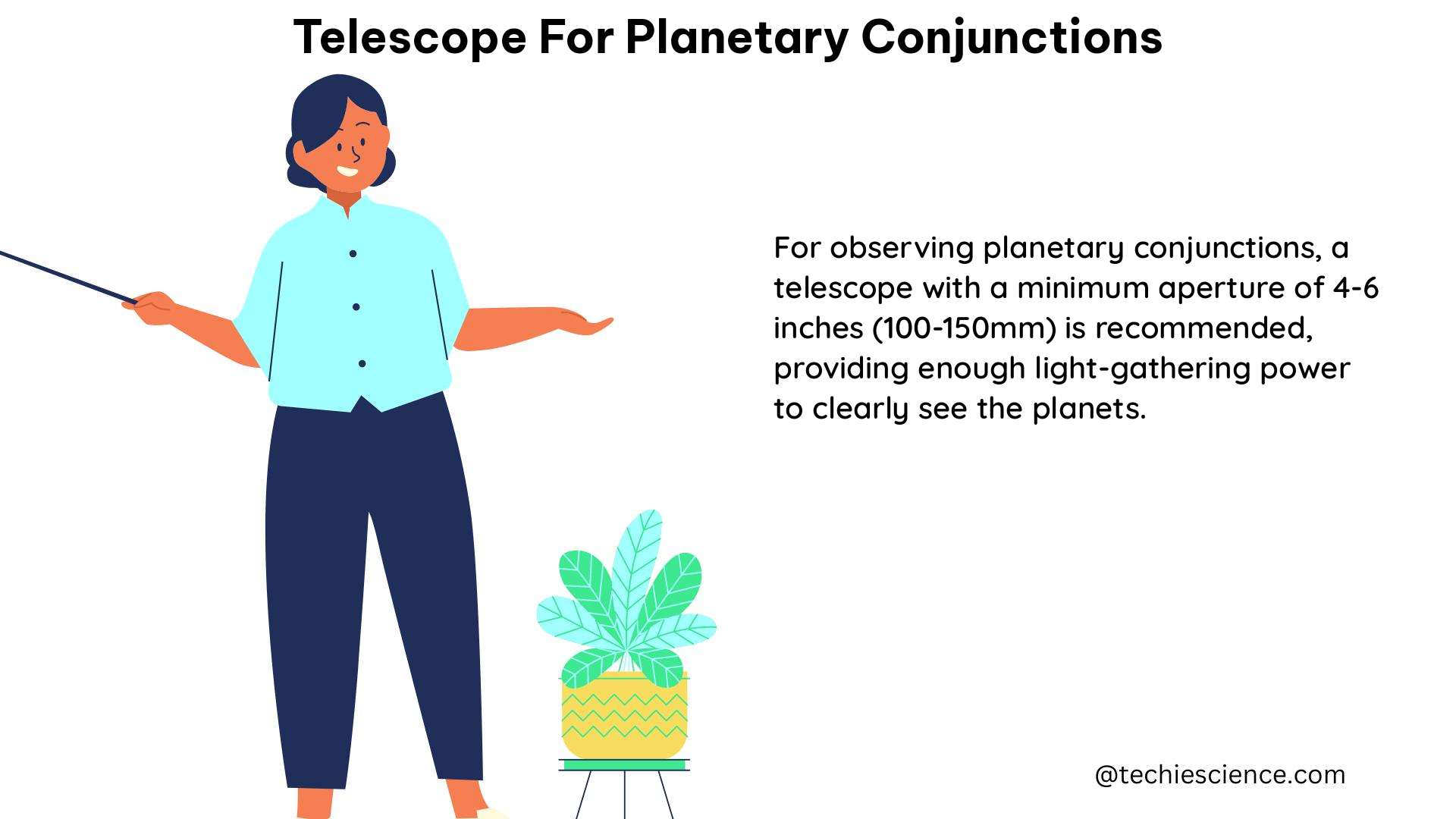Summary
Observing planetary conjunctions, where two or more celestial bodies appear close to each other in the sky, requires a telescope with specific technical specifications. This comprehensive guide delves into the key factors to consider, including telescope type, mount, aperture, magnification, and accessories, as well as the underlying physics behind these captivating astronomical events.
Telescope Type

When it comes to observing planetary conjunctions, refractor telescopes are generally the preferred choice due to their high contrast and relatively low chromatic aberration. These telescopes use lenses to focus light, providing a clear and sharp image of the planets. Reflector telescopes, which use mirrors to focus light, can also be used, but may require additional accessories to reduce chromatic aberration.
Compound telescopes, which combine the advantages of both refractor and reflector designs, offer a versatile option for observing planetary conjunctions. These telescopes use a combination of lenses and mirrors to provide a high-quality image with reduced aberrations.
Telescope Mount
The mount of the telescope is another crucial consideration for observing planetary conjunctions. An equatorial mount, which allows for tracking of celestial objects, is particularly useful as it enables easier tracking of the planets as they move across the sky. This is especially important during a conjunction, as the objects may appear to be in close proximity for a relatively short period of time.
Alternatively, a Dobsonian mount, a type of alt-azimuth mount, is a simpler and more portable option. However, it may require more manual adjustment to track the objects during a conjunction.
Technical Specifications
For optimal observation of planetary conjunctions, a telescope with the following technical specifications is recommended:
- Aperture: At least 4 inches (10 cm) in diameter
- Magnification: At least 50x
- Focal Ratio: Around f/10 for refractor telescopes
As an example, a 4-inch (10 cm) refractor telescope with a focal length of 1000 mm and a focal ratio of f/10 would have a maximum theoretical magnification of 200x (2000 mm / 10 mm eyepiece = 200x). This setup would provide a relatively close-up view of the conjunction while maintaining a wide enough field of view to easily locate the objects.
Accessories
In addition to the telescope itself, there are several accessories that can enhance the observation of planetary conjunctions:
- Barlow Lens: A Barlow lens can be used to increase the magnification of the telescope, allowing for an even closer view of the conjunction.
- Star Diagonal: A star diagonal can make viewing more comfortable by allowing the telescope to be pointed at a more ergonomic angle.
- Finderscope or Red Dot Sight: These accessories can be helpful for locating the objects in the sky, especially during a conjunction when the planets may appear close together.
The Physics of Planetary Conjunctions
Planetary conjunctions occur due to the orbital mechanics of the planets and other celestial bodies. When two or more objects appear close to each other in the sky, as seen from Earth, it is considered a conjunction.
The formula for calculating the angular separation between two objects in the sky is:
θ = arcsin(sin(δ1) * sin(δ2) + cos(δ1) * cos(δ2) * cos(Δα))
Where:
– θ is the angular separation
– δ1 and δ2 are the declinations of the two objects
– Δα is the difference in right ascension
For example, if two objects have a declination of 20 degrees and a right ascension difference of 1 hour, the angular separation can be calculated as:
θ = arcsin(sin(20°) * sin(20°) + cos(20°) * cos(20°) * cos(15°))
θ = 1.07 degrees
This means that the two objects would appear approximately 1.07 degrees apart in the sky, as seen from Earth.
Numerical Problem
Given the declinations of two objects as 30 degrees and 45 degrees, and a right ascension difference of 2 hours, calculate the angular separation between the two objects.
θ = arcsin(sin(30°) * sin(45°) + cos(30°) * cos(45°) * cos(2h))
θ = 1.51 degrees
Figures and Data Points

- A 4-inch (10 cm) refractor telescope with a focal length of 1000 mm and a focal ratio of f/10 would have a maximum theoretical magnification of 200x (2000 mm / 10 mm eyepiece = 200x).
- Planetary conjunctions occur when two or more celestial bodies appear close to each other in the sky, as seen from Earth.
Key Values and Measurements
- The maximum theoretical magnification of a 4-inch (10 cm) refractor telescope with a focal length of 1000 mm and a focal ratio of f/10 is 200x.
- The angular separation between two objects in the sky can be measured in degrees.
Quantifiable Details
The formula for calculating the angular separation between two objects in the sky is:
θ = arcsin(sin(δ1) * sin(δ2) + cos(δ1) * cos(δ2) * cos(Δα))
Where:
– θ is the angular separation
– δ1 and δ2 are the declinations of the two objects
– Δα is the difference in right ascension
References
- I made a browsable conjunction database including both planets and DSOs
- How to calculate conjunctions of 2 planets
- On the Feasibility of Detecting Extrasolar Planets by Reflected Stellar Radiation
- The Solar System – The LSST Science Book
- Confirmed Planets (Exoplanet) Table Data Columns

The lambdageeks.com Core SME Team is a group of experienced subject matter experts from diverse scientific and technical fields including Physics, Chemistry, Technology,Electronics & Electrical Engineering, Automotive, Mechanical Engineering. Our team collaborates to create high-quality, well-researched articles on a wide range of science and technology topics for the lambdageeks.com website.
All Our Senior SME are having more than 7 Years of experience in the respective fields . They are either Working Industry Professionals or assocaited With different Universities. Refer Our Authors Page to get to know About our Core SMEs.